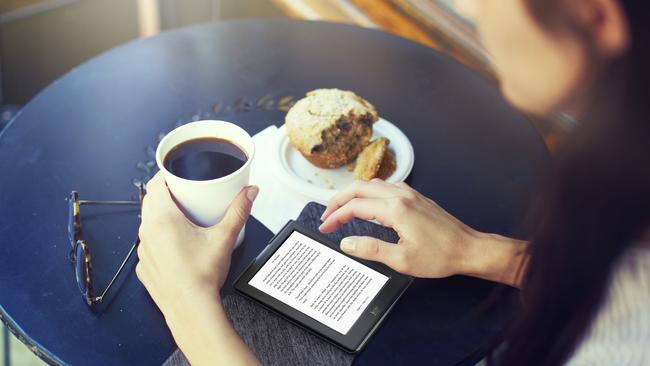Women and older readers are behind the e-book revolution, but they still buy print tomes
They are rarely credited with a technological revolution, but women and people over 45 years of age are behind the electronic book trend.

Technology is often perceived as a young person’s game.
Internet-raised, hashtag-spouting whippersnappers aged between 18 and 35 are regularly credited with pioneering everything from social networks to streaming video.
But there’s one trend that belongs to a mature generation: electronic books.
LIBRARIES CATCHING UP: Sydney libraries deny e-book slow-go
APPLE BOOKS: Tech giant found guilty of a price-fixing conspiracy on e-books
Digital tomes now make up between 20 and 30 per cent of all book sales, and readers 45 years and over are spearheading the technology.
“We might be in the midst of the first and only technological revolution being driven by people aged 45 and older rather than 35 and younger,” a recent study by Canadian e-book company Rakuten Kobo found.

Rakuten Kobo chief executive Michael Tamblyn says he was initially surprised by the age of his most passionate audience, but it’s the same audience you’d run into inside a bricks and mortar bookstore.
“I went looking to see if there had been another (trend driven by an older generation) and couldn’t find one, particularly in technology,” he says.
“This is far and away driven by people aged 45-plus. The most valuable customer base is the 55 to 64 age group. That is the demographic that supports the book industry but it’s rarely the one we think of driving a technological change.”
And, in another tech blip, 75 per cent of the most prolific readers are women. Men don’t join the e-book reading trend in significant numbers until after the age of 65, Rakuten Kobo found.
E-book sales first made a mark in Australia in 2009 after market leader Amazon launched its Kindle reader. But sales of e-book readers in general didn’t peak until 2012, online statistics portal Statista reports, and reached 20.2 million last year — a drop of five million from the previous year.
While hardware sales dipped, e-book sales have defied predictions and own a significant chunk of the market. The success is fuelled, Tamblyn says, by high-profile bestsellers.
“We see a lot of people who came in with 50 Shades of Grey, with Hunger Games, and when the bestsellers of the day die down we see a digital slowdown,” he says. “This year it was all about the adult colouring book and there’s not a lot we can do with that.”

Audiobooks are also challenging dog-eared novels for attention.
Amazon subsidiary Audible launched its service locally in late 2014 and claims 5.6 million Australians now listen to stories narrated through their smartphone app. Audible spokeswoman Tracey Markham says Australian book lovers are adopting its spoken-word approach faster than those in the UK, with “triple-digit” growth.
But neither company claims its story-consuming approach will replace books entirely. At least not yet.
Audible says its customers use its service to multi-task, listening to spoken stories while they commute, do housework or, bizarrely, sit on the toilet.
Kobo says its best and “most passionate” customers have not given up on printed books, proving the two forms can coexist.
“They’re buying 60 e-books a year but they’re still buying print books,” he says.
“They’re buying 16 printed books a year even though they have this river of digital flowing through their lives.”
A challenge for all types of booksellers? Getting readers to finish the job. Kobo’s research shows average readers only finish reading 40 per cent of the books in their digital libraries.




